
Politics
09:31, 18-Dec-2018
40 Years in Words: Political wisdom behind China's 'miracle development' over four decades
Updated
08:43, 21-Dec-2018
CGTN
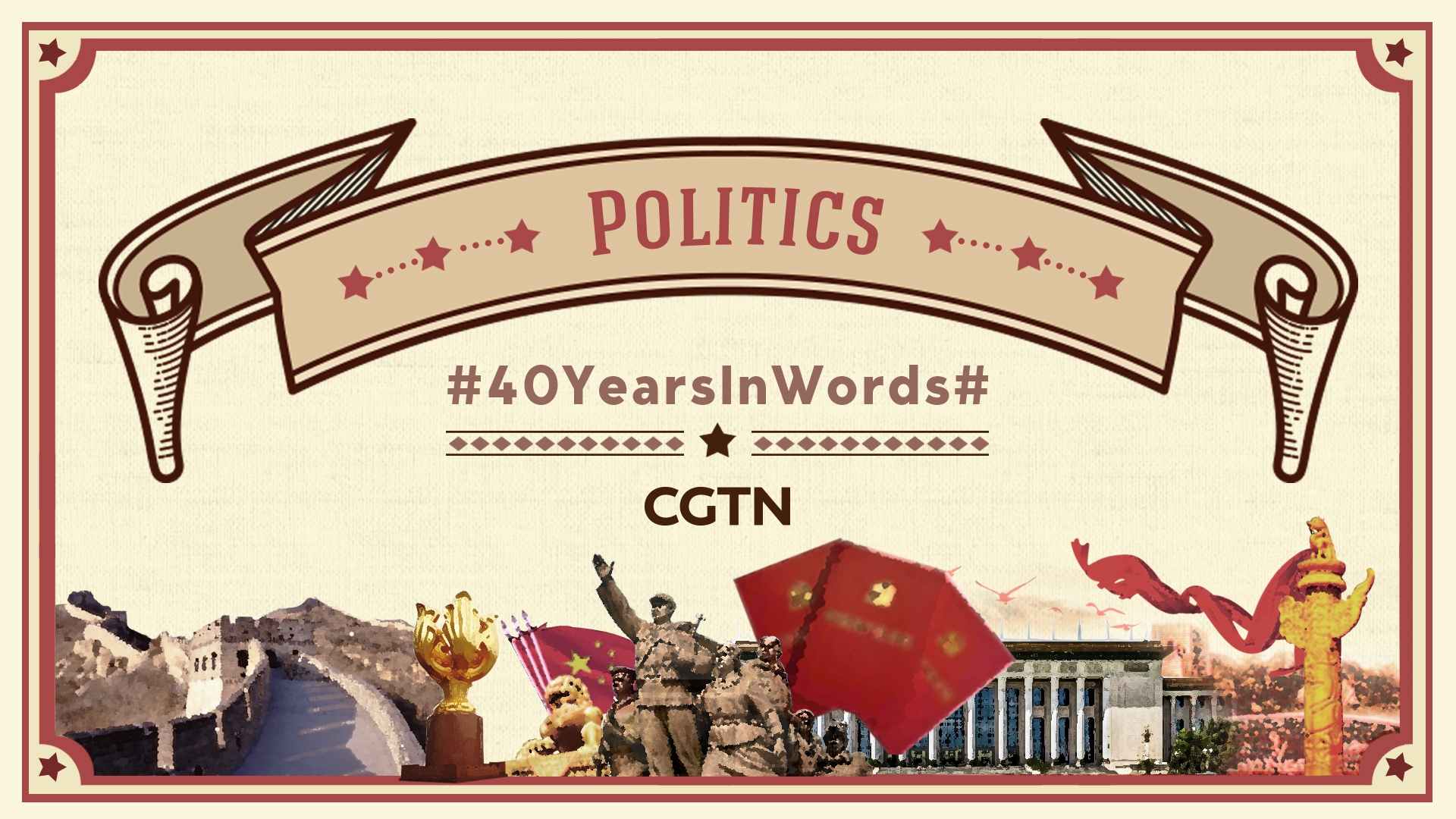
Back in 1978, China's gross domestic product (GDP) was nearly 45 percent of the UK's, 15 percent of Japan's, and less than seven percent of the size of the United States. Now China is the world's second largest economy following the U.S., a strong global economy contributor and one of the major powers on world stage, both economically and politically.
All changes started 40 years ago, when late Chinese leader Deng Xiaoping proposed a new way – reform and opening-up, to steer the country's development path.
To better understand what's behind China's “miracle development”, CGTN picks up five keywords, "Reform and opening-up", "Emancipate the mind ", "Socialism with Chinese characteristics", "One Country, Two Systems", and the "Chinese Dream" to explain how China's political wisdom has turned the once poverty-stricken country upside down, and is still having a profound impact on the country's development over the last four decades and beyond.
Reform and opening-up
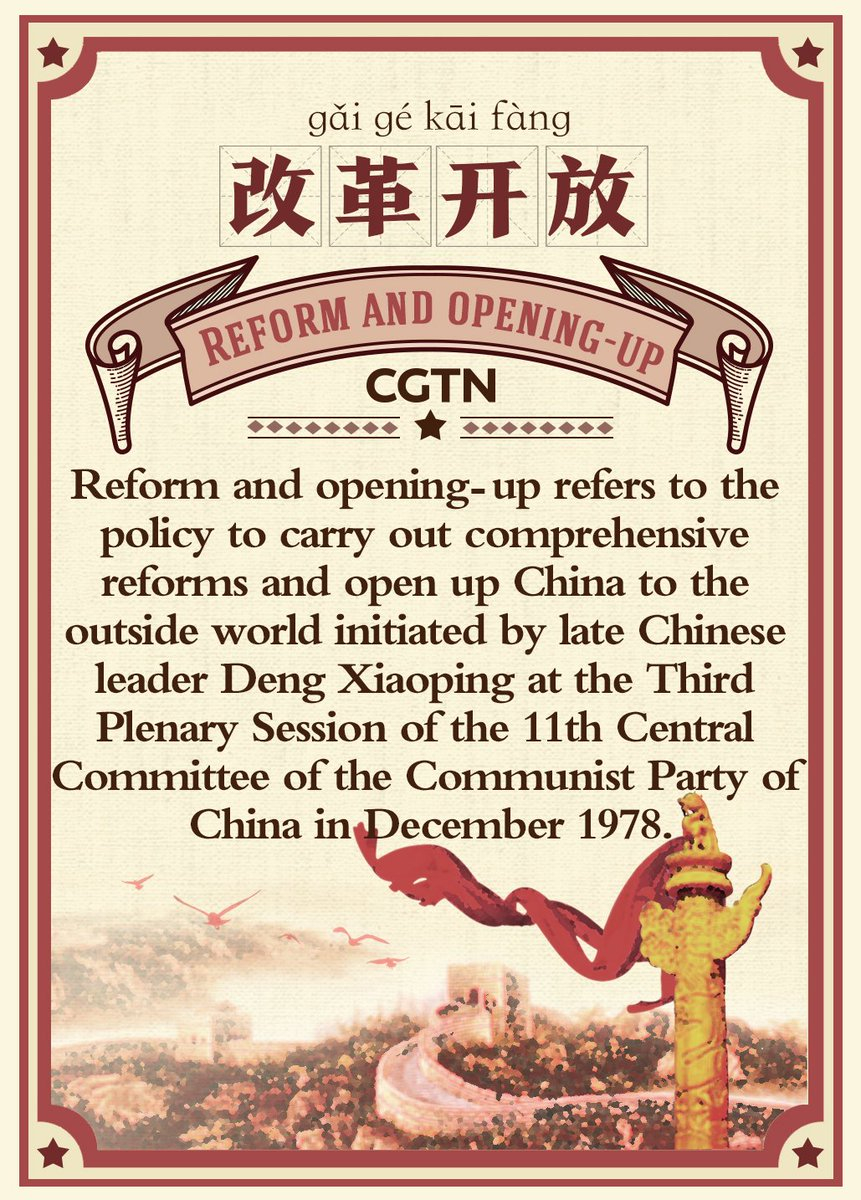
CGTN Photo
CGTN Photo
Initiated at the Third Plenary Session of the 11th Communist Party of China (CPC) Central Committee in December 1978 by late Chinese leader Deng Xiaoping, "reform and opening-up" was a policy to carry out comprehensive reforms including that of the country's economic system and open the door of China to the world.
Since the policy was implemented, China has embarked on widespread economic reforms in rural and urban areas, gradually replacing its planned economy with a market-driven one. The country has also set up special economic zones and increasingly opened its market to the outside world while ending decades of seclusion under the historic scheme.
The reform and opening-up was the force behind China's economic miracle over the past four decades, as the country's GDP grew 33.5 times from 1978 to 2017 with an average annual growth of 9.5 percent, according to Xinhua News Agency. It also upgraded China to the world's second-largest economy and a development engine accounting for more than 30 percent of world economic growth.
Emancipate the mind
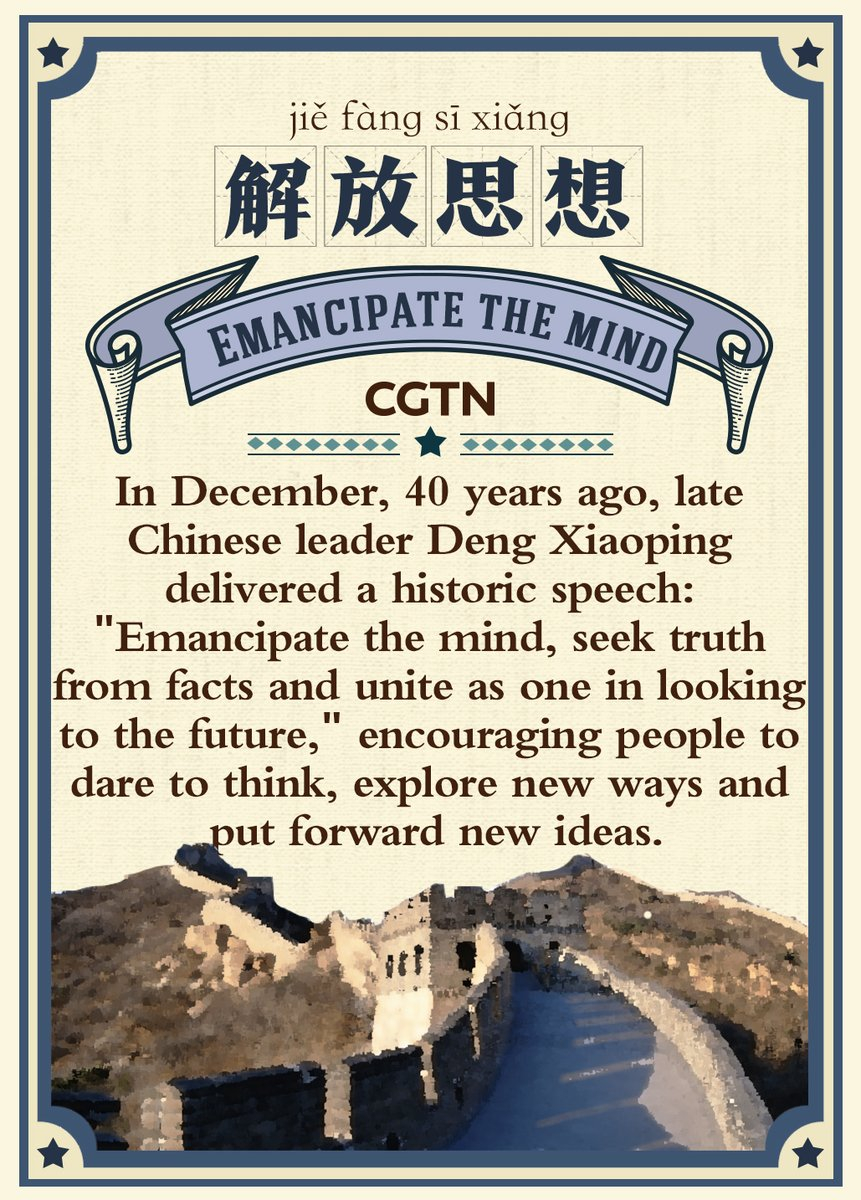
CGTN Photo
CGTN Photo
"The primary task is to emancipate our minds," on December 13, 1978, Deng Xiaoping, chief architect of China's reform and opening-up policy, made a historic speech and called on people to dare to think, explore new methods and put forward new ideas.
In his speech, Deng said, "only if we emancipate our minds, seek truth from facts, proceed from reality in everything and integrate theory with practice, can we carry out our socialist modernization program smoothly."
This speech served as the keynote address for the Third Plenary Session of the 11th CPC Central Committee, a landmark meeting that lifted the curtain of China's reform and opening-up.
Socialism with Chinese characteristics
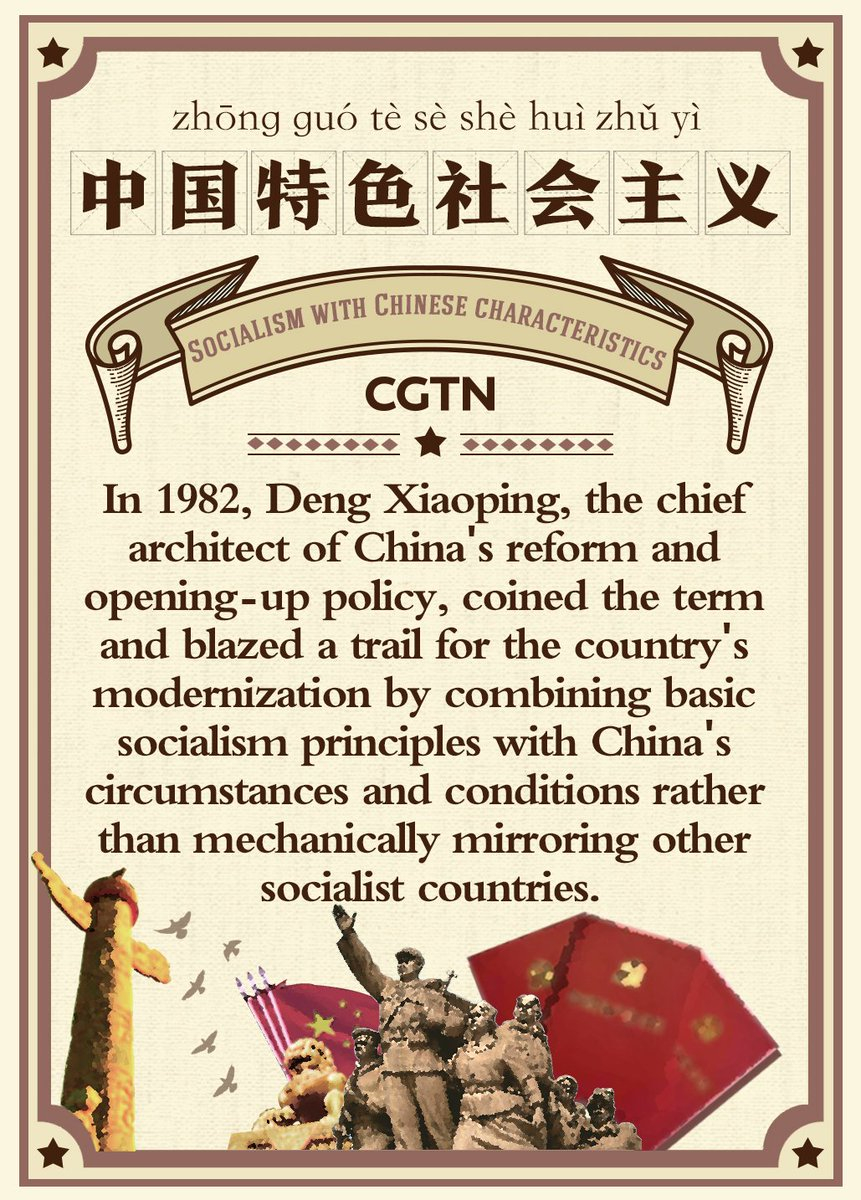
CGTN Photo
CGTN Photo
At the 12th National People's Congress in 1982, Deng Xiaoping put forward the term "Socialism with Chinese characteristics" and blazed a trail for the country's modernization by combining basic socialism principles with China's circumstances and conditions rather than mechanically copying other socialist countries.
Taking economic construction as its central task, the theory, which aims to build a unique socialist market economy while advancing the reform and opening-up policy under the leadership of the CPC, is still upheld to this day and has been upgraded as time went by.
One Country, Two Systems
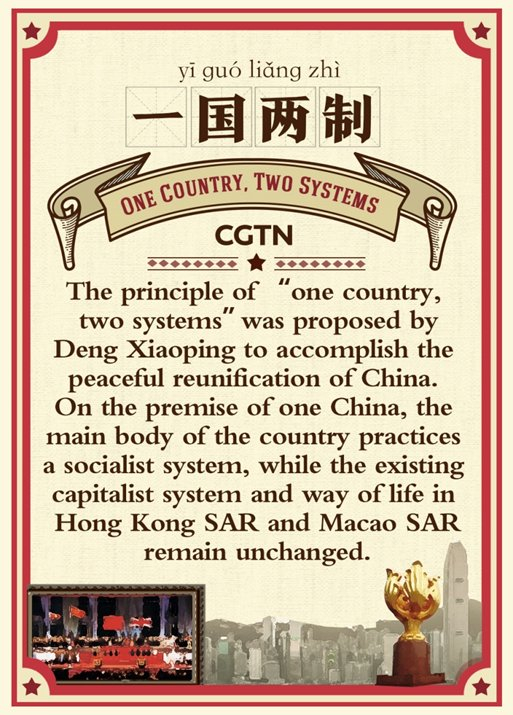
CGTN Photo
CGTN Photo
”One Country, Two Systems”, a principle proposed by Deng Xiaoping in the early 1980s, is to accomplish the peaceful reunification of China.
According to Deng, "one country, two systems" means there is only one China and under this premise the Chinese mainland adheres to the socialist system while Hong Kong, Macao and Taiwan may retain their capitalist systems over a long time.
The idea was first brought to reality in 1997 for solving the question of Hong Kong, realizing the city's return to China after 156 years of British ruling, then followed by Macao's return to China two years later in 1999, also under the same principle.
While steadily upholding the one-China policy, the principle features a high degree of autonomy, letting the people of Hong Kong governing Hong Kong and the people of Maco governing Macao.
From its inception to its successful implementation in the Hong Kong and Macao Special Administrative Regions (SARs), the principle has played a significant role in the development of modern-day China and remains the most important and fundamental constitutional design in Hong Kong's and Macao's politics.
Chinese Dream
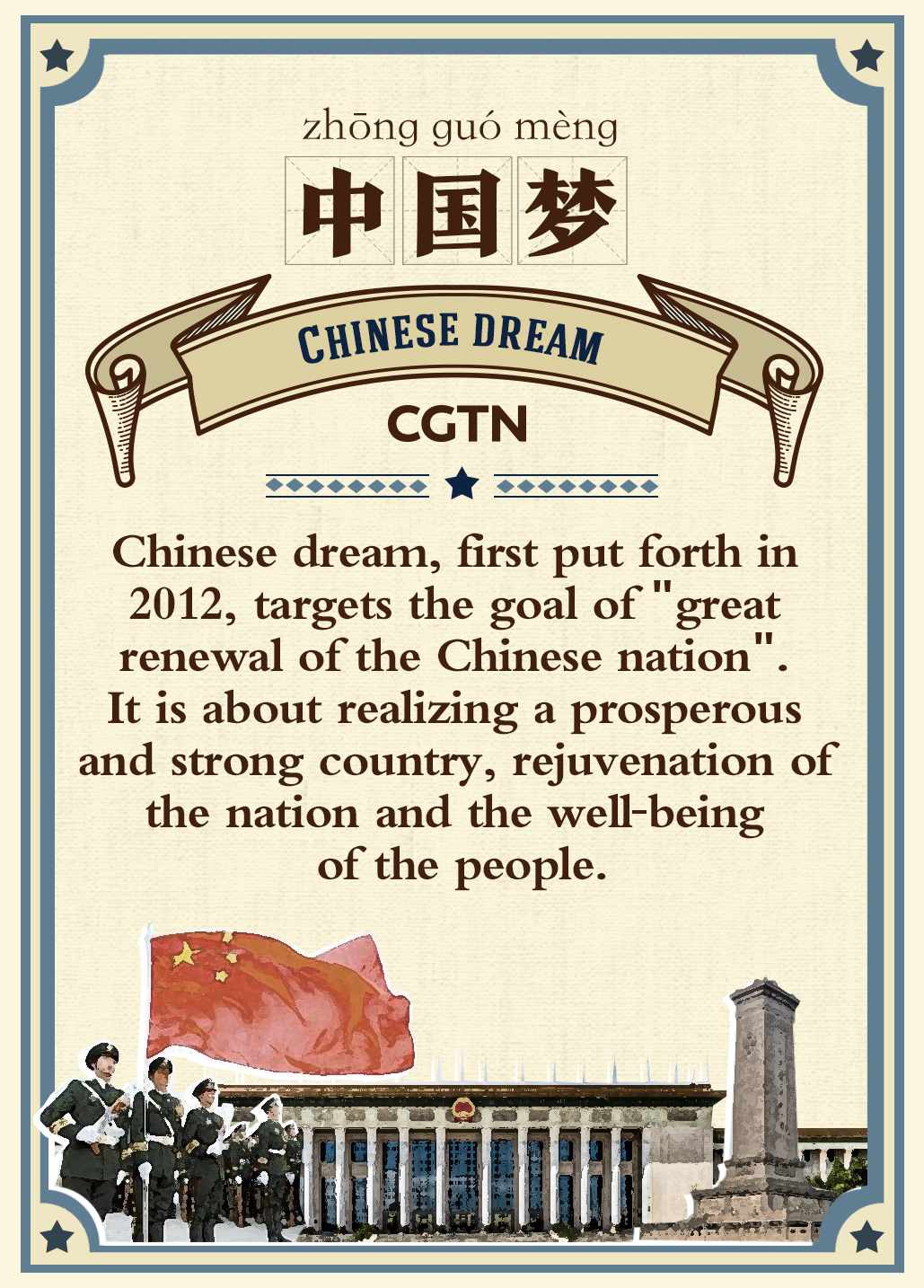
CGTN Photo
CGTN Photo
Building a moderately prosperous society and achieving the great rejuvenation of the Chinese nation amount to the greatest Chinese dream of modern times. The idea was first put forth in November 2012 by Chinese President Xi Jinping and has since become a buzzword home and abroad.
At the 19th CPC National Congress this year, Xi depicted a clear picture of the great rejuvenation of the nation – first, building a moderately prosperous society in all respects by 2020; second, basically realizing socialist modernization by 2035; and third, making China a great, prosperous, strong, democratic, culturally advanced, harmonious and beautiful socialist country.
From a rather abstract notion in the beginning, the Chinese Dream is now gradually becoming a reality as remarkable progress has been made across sectors under the leadership of the CPC.
For example, China's GDP has maintained a medium-high growth rate from 2013 to 2017, remaining high among major world economies and its GDP per capita surpassed 8,800 U.S. dollars in 2017, almost 50 times higher than that in 1977 when it was only 185 U.S. dollars.
Still, China has lifted 740 million people in rural areas out of poverty from 1978 to 2017, roughly 19 million each year, and vowed to eliminate poverty among rural Chinese by the year 2020.
More importantly in the process of realizing the Chinese Dream, the nation is determined more than ever to carry on the reform and opening-up and to open China's door even wider.
It has unfurled a series of reform plans over the years and held major events like the China International Import Expo (CIIE), connecting China to the world.
Just as President Xi said in his 2018 New Year address, “[The reform and opening-up] has been the only path to the development and progress of contemporary China and the only path to the realization of the Chinese Dream."
This is part of our special series “40 Years in Words” that examines the key words behind some of China's policy milestones, changes in people's livelihoods and cultural staples from the country's reform and opening-up to commemorate 40 years of the historic drive.
Read more:

SITEMAP
Copyright © 2018 CGTN. Beijing ICP prepared NO.16065310-3
Copyright © 2018 CGTN. Beijing ICP prepared NO.16065310-3